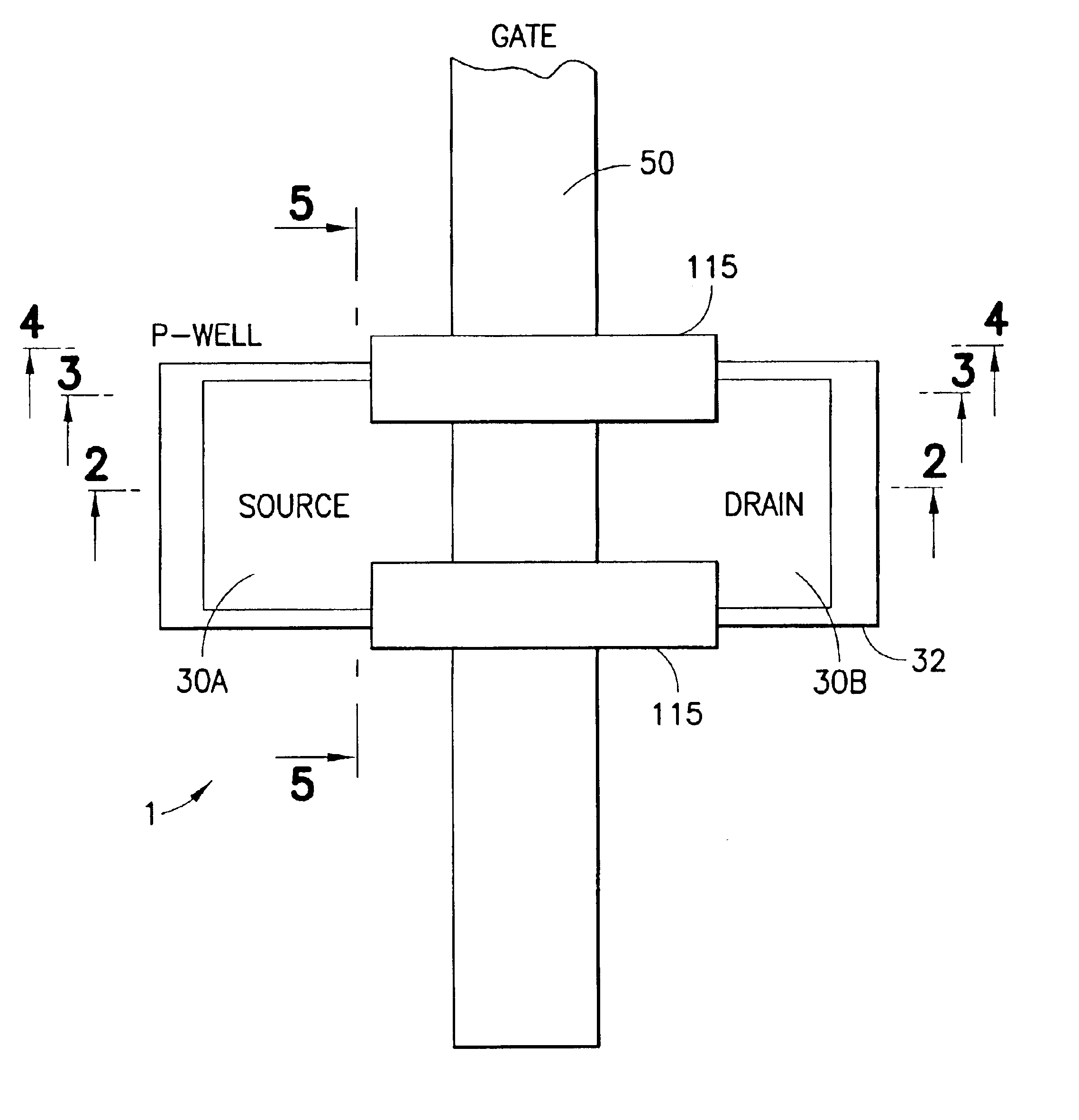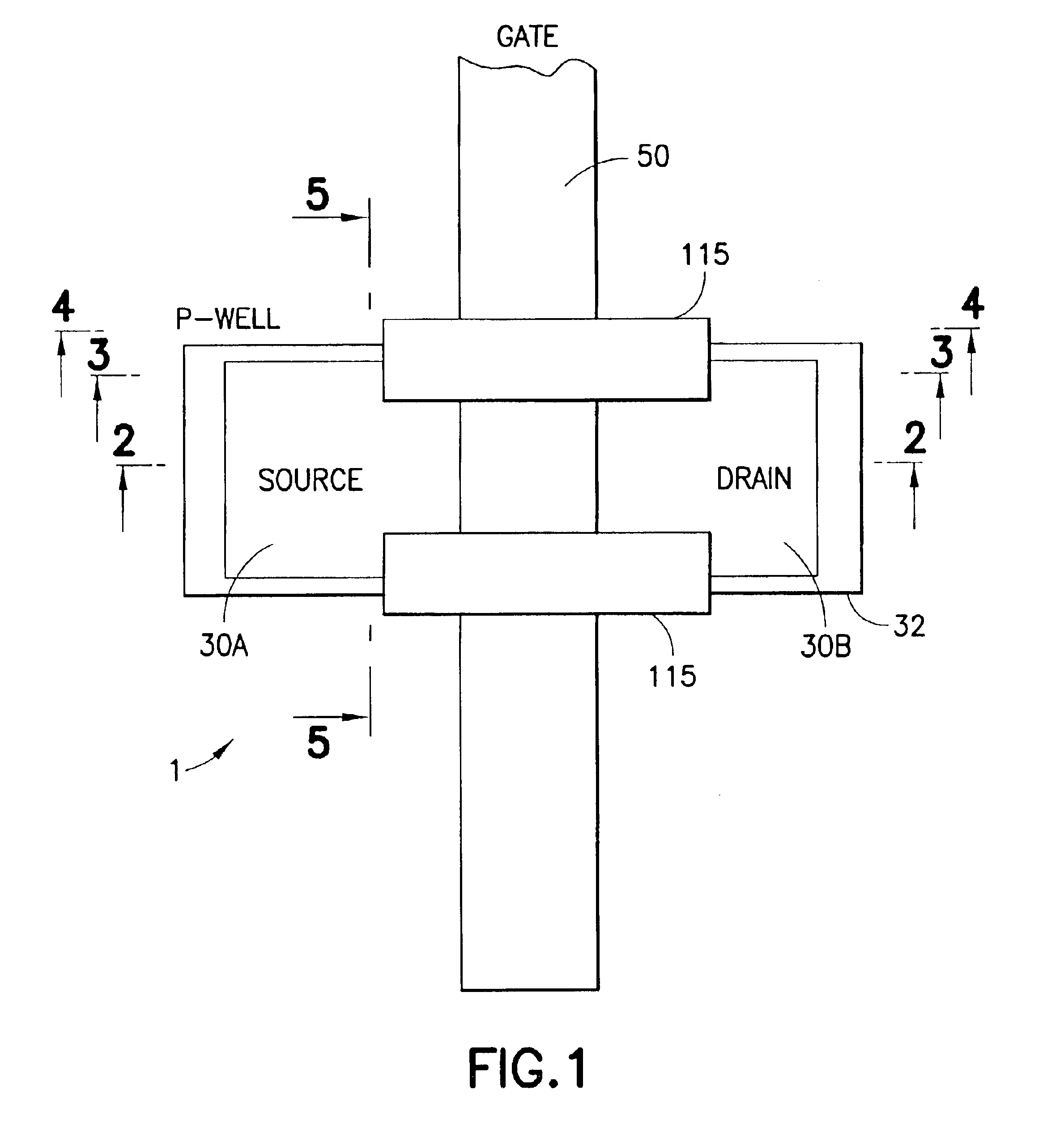Radiation-hardened transistor fabricated by modified CMOS process
a technology of cmos and transistors, applied in the direction of radiation controlled devices, semiconductor devices, semiconductor/solid-state device details, etc., can solve the problems of ionizing radiation damage, ionizing particle charge release may be trapped in oxide or nitride layers, and circuits become more susceptible to the effects of ionizing radiation
- Summary
- Abstract
- Description
- Claims
- Application Information
AI Technical Summary
Benefits of technology
Problems solved by technology
Method used
Image
Examples
Embodiment Construction
FIG. 1 shows a top view of field effect transistor (FET) 1, such as an NFET, implanted with a radiation-hardening implant forming guard bands 115 according to the invention.
The FET 1 has a source 30A and a drain 30B bisected by a gate 50 that extends past the transistor body in the vertical direction in the drawing. The FET 1 is located in a P-well that can be formed by a conventional method. Two areas of the FET structure, referred to as the guard bands 115, are implanted with a dose of ions to suppress leakage caused by radiation (referred to as a leakage-suppressing dopant and having the same polarity as the FET body). The areas extend along the edges of the transistor body covering the area where the gate 50 crosses the edge of the body and extends into the S / D.
The FET 1 is surrounded by a trench field insulator 20, illustratively CVD oxide deposited in a shallow trench. If space and the thermal budget permit, the insulation could be a thermal oxide also. Having the field insula...
PUM
 Login to View More
Login to View More Abstract
Description
Claims
Application Information
 Login to View More
Login to View More - R&D
- Intellectual Property
- Life Sciences
- Materials
- Tech Scout
- Unparalleled Data Quality
- Higher Quality Content
- 60% Fewer Hallucinations
Browse by: Latest US Patents, China's latest patents, Technical Efficacy Thesaurus, Application Domain, Technology Topic, Popular Technical Reports.
© 2025 PatSnap. All rights reserved.Legal|Privacy policy|Modern Slavery Act Transparency Statement|Sitemap|About US| Contact US: help@patsnap.com



